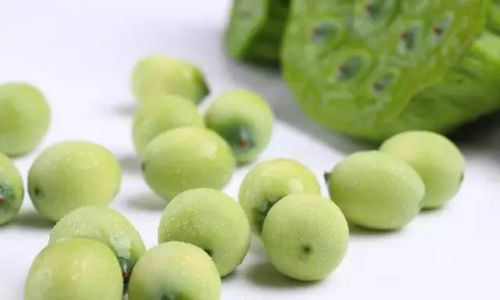Introduction
In the realm of home remedies, traditional wisdom often intersects with culinary creativity to produce simple yet effective treatments for various ailments. One such remedy that has garnered attention in recent years is salt-steamed oranges. While oranges are commonly enjoyed fresh, juiced, or in desserts, steaming them with a pinch of salt transforms them into a soothing and nutritious elixir believed to alleviate coughs, sore throats, and respiratory congestion. This article delves into the origins, benefits, and step-by-step process of making salt-steamed oranges, offering insights into why this remedy might work and how to customize it to suit individual preferences.
Origins and Cultural Significance
The concept of steaming fruits with salt is not unique to modern times or Western culture. Across Asia, particularly in China, steaming fruits and vegetables with various spices and herbs has been a part of traditional medicine and culinary practices for centuries. While salt-steamed oranges might not have a specific, widely documented historical origin, the broader practice of steaming fruits falls under the umbrella of “steam therapy,” which leverages the healing properties of steam and ingredients like salt.
In Chinese folk medicine, oranges are valued for their citrusy aroma, rich vitamin C content, and potential to warm the body. The addition of salt is believed to enhance the orange’s ability to soothe sore throats and clear mucus, making it a popular remedy during cold and flu seasons. While scientific research on the specific efficacy of salt-steamed oranges is limited, the combination of warmth, moisture, and natural ingredients makes it a compelling choice for those seeking gentle relief from respiratory discomfort.

Nutritional Benefits of Oranges and Salt
Before diving into the recipe, let’s explore the nutritional benefits that oranges and salt bring to this remedy.
Oranges:
- Vitamin C: Oranges are renowned for their high vitamin C content, which is essential for immune function, skin health, and tissue repair.
- Antioxidants: They contain various antioxidants, including flavonoids like hesperidin and naringin, which may help reduce inflammation and protect against chronic diseases.
- Fiber: The fruit’s fiber content supports digestive health and aids in weight management.
- Potassium: Oranges are a good source of potassium, which is crucial for maintaining heart health and fluid balance.
Salt:
- Electrolytes: Salt provides sodium and chloride, essential electrolytes that help regulate fluid balance and nerve function.
- Minerals: Depending on the type of salt used (e.g., sea salt, Himalayan salt), additional trace minerals like magnesium, calcium, and iodine may be present.
- Osmotic Effect: The osmotic properties of salt can help draw out moisture, which might be beneficial for soothing sore throats or reducing congestion.
While excessive salt intake is generally discouraged due to its potential to raise blood pressure, the small amount used in this remedy is unlikely to pose health risks for most people.
How Salt-Steamed Oranges Work
The effectiveness of salt-steamed oranges can be attributed to several factors:
- Warmth and Moisture: Steaming the orange softens its flesh and releases its juices, creating a warm, moist environment that soothes irritated throats and nasal passages.
- Salt’s Osmotic Effect: The salt may help draw out excess mucus and reduce congestion by creating an osmotic gradient that draws fluid out of cells.
- Aroma and Flavor: The citrusy aroma and flavor of the orange can provide a refreshing sensation, making breathing feel easier and lifting the spirit.
- Comfort and Mindfulness: The act of preparing and consuming a homemade remedy can also bring a sense of comfort and mindfulness, which can positively impact overall well-being.
Step-by-Step Recipe for Salt-Steamed Oranges
Now, let’s walk through the process of making salt-steamed oranges. This recipe is straightforward and requires minimal ingredients and equipment.
Ingredients:
- 1 fresh, ripe orange
- A pinch of coarse sea salt or kosher salt (about 1/4 teaspoon)
- Optional: a small knife, a steaming basket or bowl, and a pot with a lid
Instructions:
-
Prepare the Orange:

- Choose a fresh, ripe orange with a smooth, firm skin. Avoid oranges that are too soft or have bruises, as they may not hold up well during steaming.
- Rinse the orange under cold running water to remove any dirt or residue. Pat it dry using a clean paper towel.
-
Create a Salt Pocket:
- Using a small, sharp knife, make a shallow cut (about 1/4 inch deep) across the top of the orange. This will create a “lid” that can be removed later.
- Carefully scoop out some of the orange pulp from the top section, creating a small pocket without piercing the bottom of the orange. This pocket will hold the salt.
-
Add the Salt:
Place a pinch of coarse sea salt or kosher salt into the pocket you created. The coarse texture of the salt helps it stay in place and ensures even distribution when steaming.
-
Prepare for Steaming:
- Fill a pot with about 1-2 inches of water and bring it to a simmer over medium heat. You do not want the water to boil vigorously, as this could cause the orange to cook too quickly and become mushy.
- If you have a steaming basket, place it in the pot. Alternatively, you can use a heatproof bowl with small holes or elevate the orange using chopsticks or a metal spoon placed across the pot’s bottom.
-
Steam the Orange:
- Carefully place the orange (with the salted top) in the steaming basket or on the elevated surface in the pot.
- Cover the pot with a lid and allow the orange to steam for about 10-15 minutes. The exact timing depends on your preference for the orange’s texture; longer steaming will result in a softer, juicier orange.
-
Serve and Enjoy:
- Carefully remove the orange from the pot using tongs or oven mitts to avoid burns.
- Allow it to cool slightly before removing the “lid” and enjoying the steamed orange directly. The salt will have melted into the pulp, creating a slightly salty-sweet flavor.
- You can eat the entire orange, including the skin (which becomes tender and edible after steaming) if you prefer. Alternatively, squeeze the orange over a bowl to capture the juices and drink them as a warm, soothing beverage.
Customization and Variations
While the basic recipe is straightforward, there are several ways to customize salt-steamed oranges to suit your taste and needs:
- Honey or Maple Syrup: For a sweeter touch, drizzle a small amount of honey or maple syrup over the steamed orange before eating.
- Cinnamon or Cloves: Add a sprinkle of ground cinnamon or a couple of whole cloves to the steaming water for an aromatic, spicy twist.
- Lemon or Lime: If you prefer a more tangy flavor, you can steam a lemon or lime instead of an orange, or add a slice of lemon or lime to the orange pocket.
- Ginger: For an extra warming effect, grate a small piece of fresh ginger and place it in the orange pocket along with the salt.
Conclusion
Salt-steamed oranges offer a simple, natural remedy for respiratory discomfort that leverages the nutritious benefits of oranges and the osmotic properties of salt. By following the step-by-step recipe outlined above, you can easily prepare this soothing treat at home. Whether enjoyed as a warm fruit or as a refreshing beverage, salt-steamed oranges provide a gentle, comforting way to alleviate coughs, sore throats, and congestion. As with any home remedy, it’s important to consider individual health conditions and consult a healthcare provider if symptoms persist or worsen. However, for many, the combination of warmth, moisture, and natural ingredients in salt-steamed oranges makes it a welcome addition to their wellness routine.





0 comments